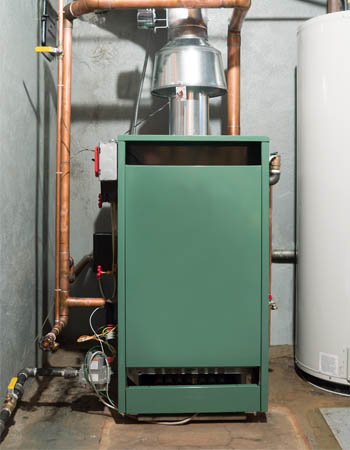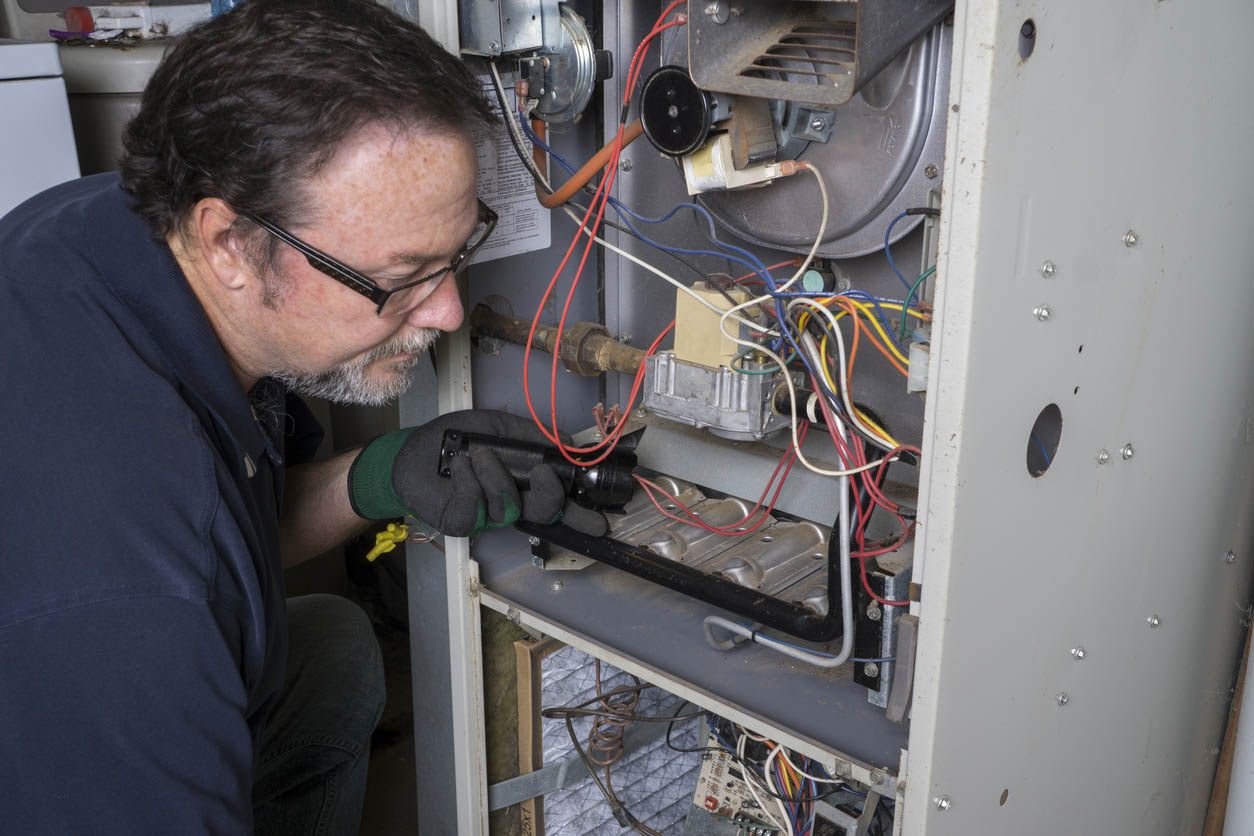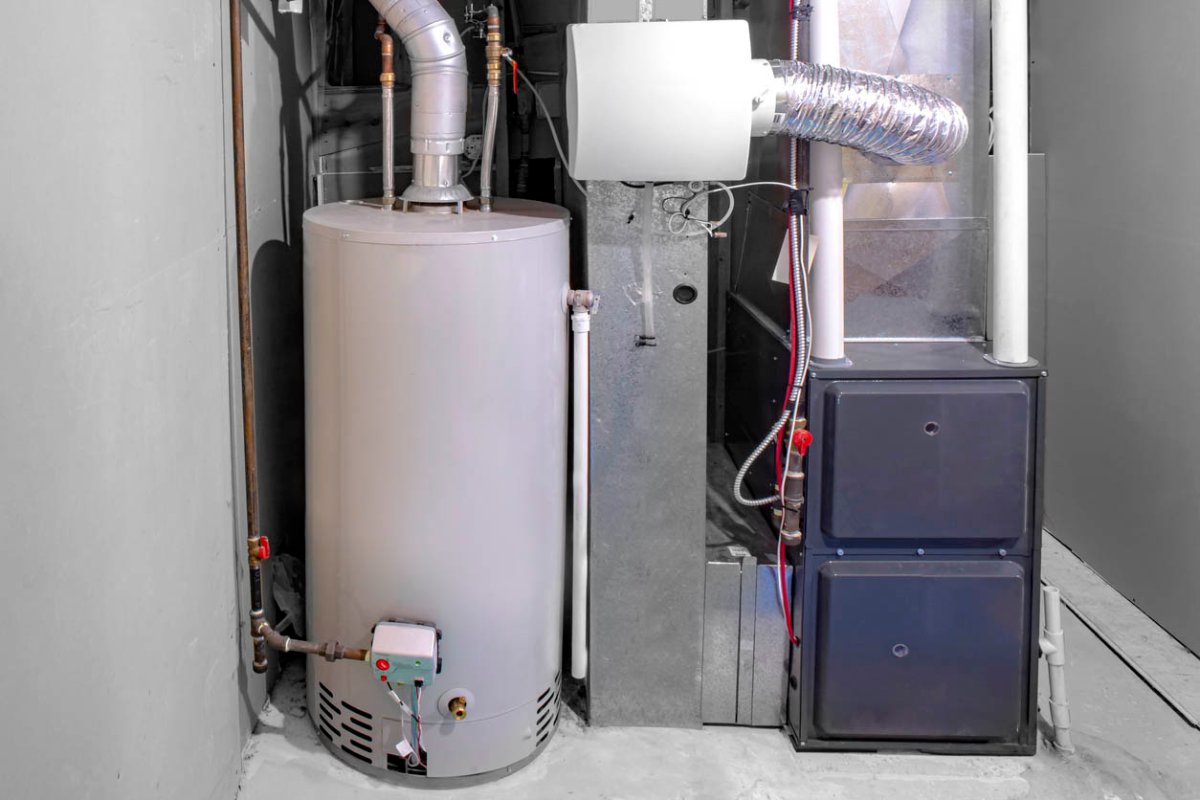We may earn revenue from the products available on this page and participate in affiliate programs. Learn More ›
Q: I live in an older home with an older furnace. It’s gone through a lot of repairs since I’ve lived here. How long does a furnace last, and how can I figure out my furnace’s life expectancy?
A: A furnace is one of the essential features of a home, so knowing about furnace life expectancy is critical for homeowners. How long a furnace will last depends on various factors, including the furnace’s unique features, when it was manufactured, and how well it’s been looked after. For someone living in an older home, the furnace is likely at the end of its lifespan if it hasn’t been replaced within the last few years. Knowing how to spot poor installation or neglectful maintenance can give homeowners a good idea if their furnace has time left—or if it’s time to replace it.
A well-maintained furnace will last for 15 to 20 years.

Generally, a homeowner can expect a furnace to last 15 to 20 years. With excellent routine maintenance and a little luck, a furnace can last even longer. Likewise, a neglected furnace may not last beyond its warranty.
In general, oil-fueled furnaces have the longest life expectancy, and gas-fired furnaces have the shortest. Homeowners should know which source—oil, gas, or electric—powers their furnace because it affects longevity and the specifics of maintenance and associated energy costs.
A furnace older than 10 years should get careful attention since most furnace repairs happen during the last quarter of its lifespan. If a homeowner is unsure of the furnace’s age, they can reference the furnace’s manual to find the furnace’s serial number. The digits represent when the furnace was manufactured. If a manual is unavailable, the furnace itself should have a label, either on the outside of the unit or inside its door or cabinet, with its model and serial number.
The right size furnace for your home will ensure a maximum lifespan.
Selecting the right size furnace isn’t just choosing a smaller unit that saves money or a larger unit that heats quickly. The right size furnace is about efficiency, determined from the total square footage of a home and the heat output needed for temperature change. Not all homes with the same square footage need the same heat output. Climate, property vegetation, and characteristics of home construction all affect how hard a furnace needs to work.
A unit that’s too small will overwork, running continuously to maintain an adequate heat level. This prematurely ages a furnace, lowers its longevity, and drives up energy costs. A unit that’s too large won’t run continuously but will cycle on and off more than it should to function properly. The stress of excessive cycling can cause damage to some of the most critical parts of a furnace, making the chance of early repair and replacement more likely.
Poorly designed ductwork or improper installation can shorten a furnace’s life.
Air is a gas, which means it continuously moves to fill whatever space it’s put in. For example, air in a container spreads once its lid is removed, filling both the container and the area around it. The same principle applies to heated air from a furnace. With proper, sealed ducts, all heated air will move where it needs to go. When ducts have cracks or are poorly arranged, heated air will be wasted on areas that don’t need it. Like a furnace that’s too small, this overworks the unit.
Furnace function also relies on the proper installation of venting and fuel lines. When set up correctly, a furnace will use air and its energy source to run efficiently. With an improper setup, inefficient airflow and energy intake damage the inner parts of the furnace. It creates a safety concern, too: leaked carbon monoxide exhaust.

Routine maintenance is necessary to get the most out of your furnace.
All furnaces have filters, and changing them regularly is the easiest way to guarantee furnace efficiency. Filters affect air quality, but they’re most important for maintenance. A clogged filter restricts airflow, making a furnace work harder. It can also overheat, causing unnecessary shut-off and cycling. To avoid these adverse effects on lifespan, homeowners should replace furnace filters every season.
Additional maintenance is dictated by the energy source and size of a furnace. For example, an oil furnace will be checked more regularly than a gas or electric furnace because its fuel must be delivered and stored in a tank. It also creates more buildup, requiring more filter changes. A larger home may also have more frequent filter changes—because its furnace works with more air.
Homeowners should be aware of the appearance, sounds, and surrounding area of their furnace. If they’re unsure of what they’re looking at, professional check-ups are advised.
Temperature fluctuations and increased energy bills can signal that it’s time for a new furnace.
Even the best-maintained furnaces eventually need to be replaced. Some signs are obvious and alarming (like strange sounds or debris), but there are certain things all homeowners should keep in mind.
Old furnaces become very inefficient, and this affects the airflow and temperatures in a home. If rooms or levels are not heating as evenly as they once were, requiring frequent adjustments of the thermostat, this likely means a furnace is ready to be replaced, especially if it’s already been through repairs.
If temperature changes aren’t apparent, inefficiency may be more obvious through energy bills. At the end of its lifespan, a furnace uses more fuel to get its job done, leading to a higher energy bill. If fuel or delivery charges haven’t changed, but overall energy expenses have, homeowners should consider investing in a new, more efficient furnace to last the next couple of decades.

